What Is A Sump Pump?
8 Reasons For Sump Pump Failure
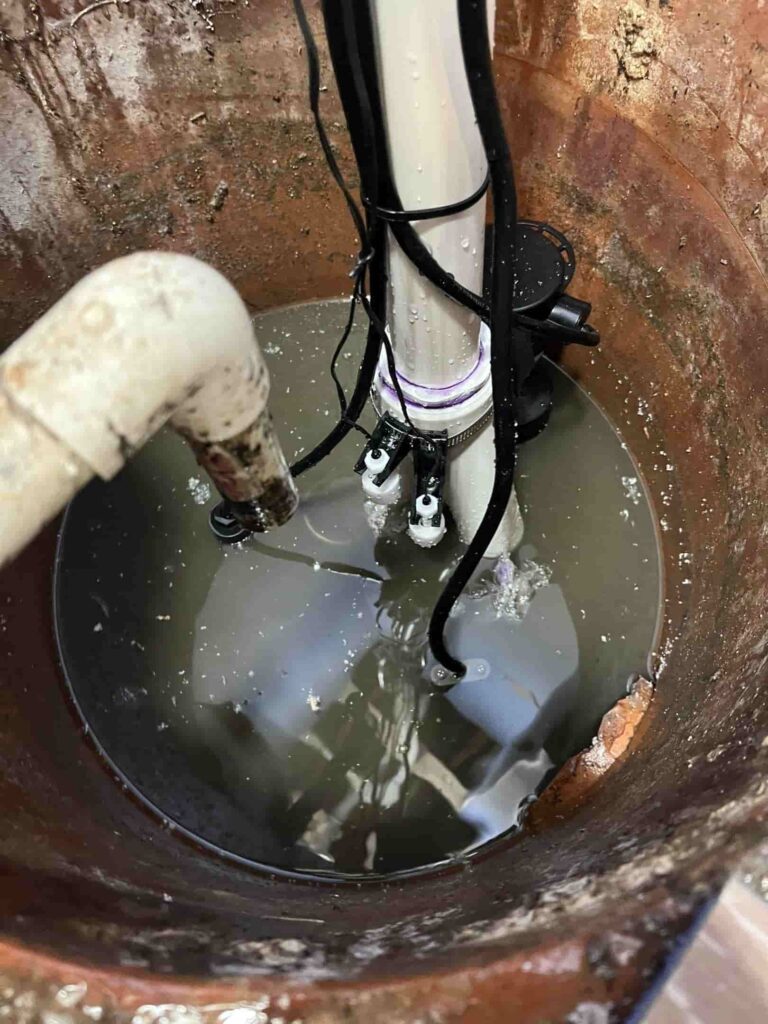
Power failure – Heavy rain or thunderstorms can cause blackouts and floods across the nation. Your sump pump is connected to your home’s power supply. If that fails, your sump pump will fail too. The best way to avoid this problem is by installing a backup battery for your sump pump, which will activate if your pump loses power.
A stuck switch – A stuck switch happens when the pump moves or shifts inside the pit. This could cause the float (the device that triggers the ejection) to lodge itself against the side of the pump. It’s also possible for debris to jam the float, preventing it from moving when the water rises. Both of these problems can be avoided by cleaning and adjusting the sump pump when needed.
Overwhelmed pump – If your sump pump is not the right size or it’s experiencing an influx of water, it can get overwhelmed and shut down. If your sump pump is too big for the amount of water that enters your pit, it can overwork and lead to a shortened lifespan. Most professionals recommend installing a 1/2 horsepower sump pump that can eject 60 gallons of water per minute.
Frozen discharge pipe – If the pipe that ejects the water freezes, the pump will attempt to push against the frozen section. The pump will keep trying to push the water through the clog, leading to it overheating and possibly boiling the water. The pump will burn out and fail, leading to a flood. If this happens during a storm, the pump won’t be able to eject water, leading to a flood.
Lack of maintenance – If you don’t properly clean your sump pit and pump, chances are it might fail due to some lack of maintenance. You can easily maintain it by running a vinegar solution through your sump pump, making sure your float is unrestricted, and cleaning all the vents/air holes on your discharge lines.
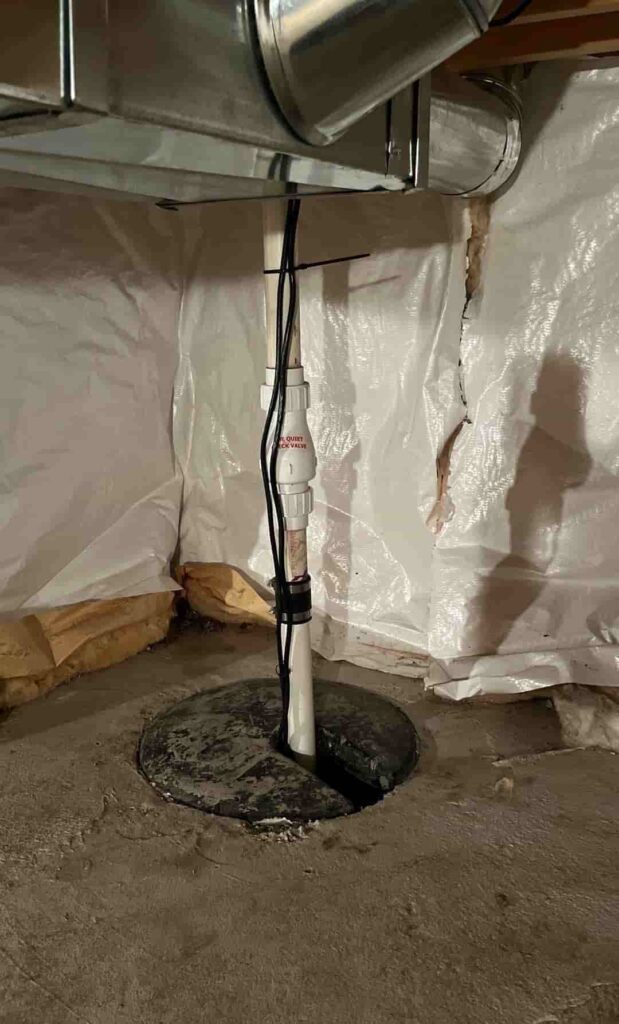
Old age – Most sump pumps need replacement after about ten years to ensure maximum safety and efficiency.
Product defect – If your sump pump is not working correctly from the moment it’s installed, there’s a chance it’s a bad product. That’s why The Real Seal uses Pit Boss sump pumps from Richtech Industries. These pumps come in various sizes and are equipped with the longest warranty in the industry (5 years).
Improper installation – There is a chance that whoever installed your sump pump didn’t follow all the proper installation methods. They could have,
- Forgotten to install a check valve on the discharge line – If your sump pump installers forgot to include a check valve on the discharge pipe, a backflow of water could cause the pump impeller (a device that pushes the water) to rotate backward and unscrew off the motor shaft. If this happens, your pump will sound like it’s running, but it won’t be pumping any water and lead to a flood.
- Set your sump pump in gravel or dirt – If your sump pit was placed around gravel or dirt, there’s a chance the small rocks could interfere with your pump’s on/off switch and float arm. The impeller could also jam and cause the pump to seize.
- Forgotten to install an air relief hole in the discharge line – An air relief hole should always be drilled between your sump pump and check valve. This prevents air pressure from building up within the discharge line. Without this, your pump will work harder to overcome the air pressure. Forcing your pump to work harder will result in a shorter lifespan and sudden failure.
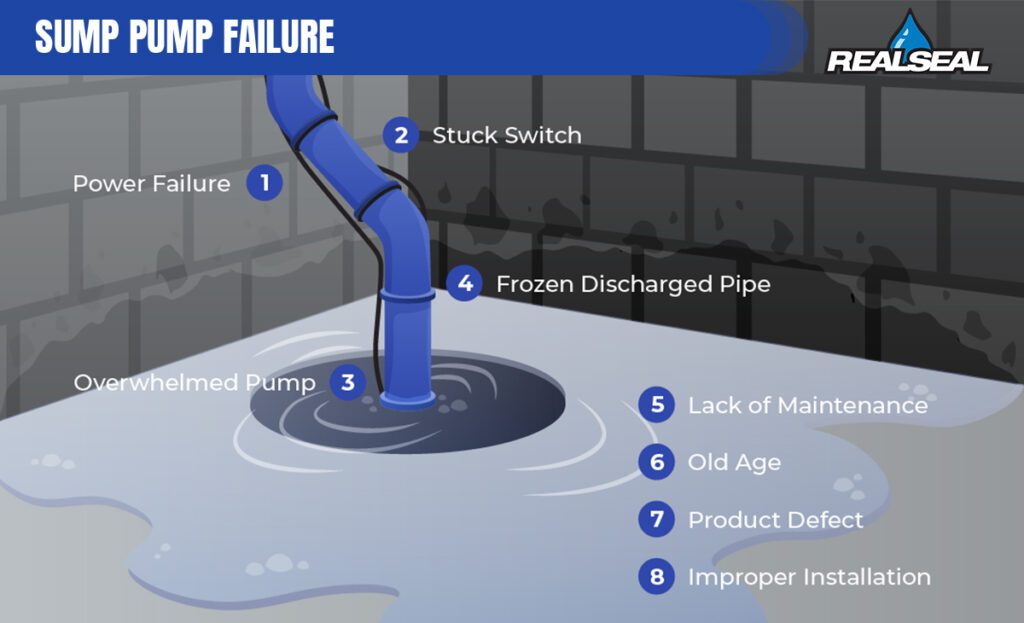
Who Can Help You With Sump Pump Failure?
If you want to upgrade the existing sump pump inside your home, or you don’t have one at all, call The Real Seal. We’ve been installing thousands of sump pumps and other waterproofing systems since 2011. Our professionals will come out, find the best place to install one, and give you an estimate for free! We also offer foundation repair, concrete leveling, and more.
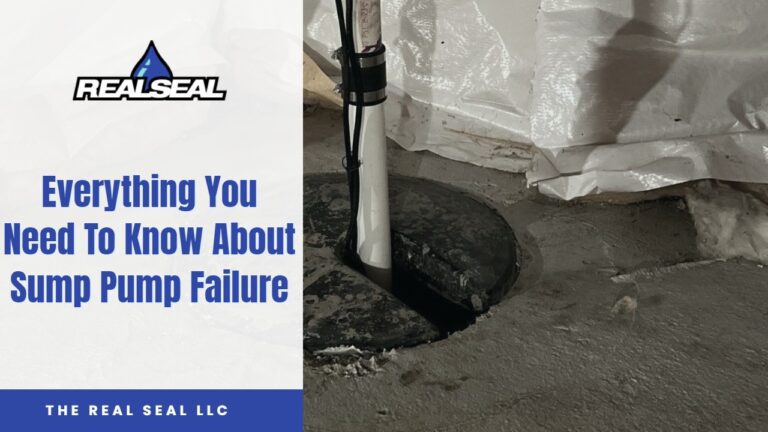
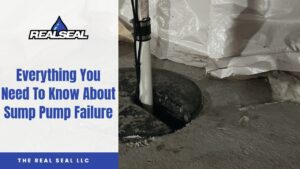





2 Responses
Your blog is a valuable resource. I appreciate the quality and variety of topics you cover. Looking forward to more!
Thanks Jeffery! Happy you are enjoying the content!